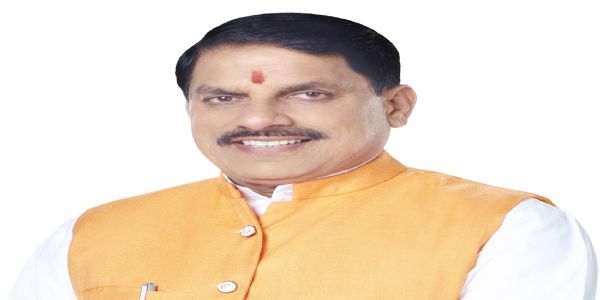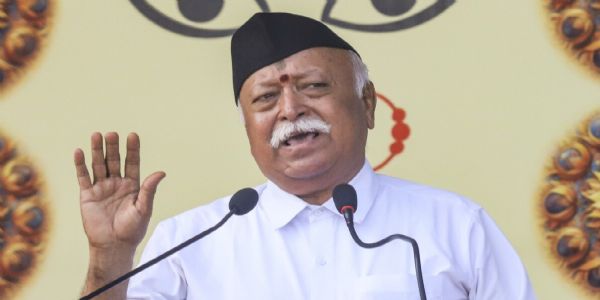

DR. SUBRATA BANSH
While most world powers expanded their influence through military conquest and political colonization, India charted a unique path—one of spiritual enlightenment. From ancient times, Indian sages and seers have sought not domination, but the upliftment of humanity through inner transformation. Among the modern torchbearers of this tradition, Paramahansa Yogananda stands out as a remarkable figure who not only carried India’s spiritual message to the West but also subtly established what can be termed a “spiritual colonization” of Indian culture in America—a gentle occupation of hearts and minds, not of land or governance.
In 1920, Yogananda traveled to the United States as India’s delegate to the International Congress of Religious Liberals held in Boston. This marked the beginning of a mission that would reshape the spiritual landscape of the Western world. That same year, he founded the Self-Realization Fellowship (SRF) with the mission of disseminating the ancient science of yoga and meditation to seekers worldwide. What set his approach apart was not only his authenticity as a spiritual teacher but also his strategic clarity—realizing the West was ready for inner awakening, he presented India’s timeless wisdom in a way that resonated deeply with a new generation searching for meaning beyond material success.
By 1925, Yogananda had established the SRF international headquarters in Los Angeles, a move that strategically placed Indian spirituality at the heart of the American cultural and cinematic world. Hollywood, a global influencer even then, welcomed Yogananda’s teachings with open arms. He began attracting a wide array of students, including prominent intellectuals, artists, and scientists. The headquarters in Mount Washington became not just a spiritual retreat, but a vibrant center for cross-cultural spiritual dialogue. To this day, it remains active and influential, offering guidance to people from all walks of life, regardless of religious background.
Yogananda’s teachings emphasized the unity of all religions and the importance of personal, experiential connection with the Divine. Unlike many dogmatic approaches, he urged individuals to seek direct perception of truth through deep meditation. He taught that through ancient techniques like Kriya Yoga, one could accelerate spiritual evolution and realize God within. This inner transformation, he maintained, was not exclusive to monks or saints—it was available to all, regardless of nationality, race, or creed.
What made his message uniquely appealing was his ability to blend Eastern mysticism with Western scientific thinking. He often spoke in terms familiar to scientifically minded audiences, explaining concepts like prana (life energy), vibration, and consciousness in quasi-scientific language. He recognized the importance of appealing to the rational mind, even while leading people toward transcendental experience. This approach made his teachings accessible and appealing to a population increasingly disillusioned with conventional religion but still spiritually hungry.
A pivotal moment in his mission came in 1946, with the publication of his spiritual classic, Autobiography of a Yogi. More than just a memoir, this book served as a gateway into the world of Indian spirituality for millions of readers. With vivid stories of miraculous saints, deep meditative experiences, and the universal truths of yoga, the book captivated readers across continents. It has been translated into over 50 languages and continues to sell widely even decades after Yogananda’s passing. The Autobiography remains required reading for spiritual aspirants and is often credited with introducing yoga and meditation to mainstream Western audiences.
Yogananda’s influence extended beyond literature. His commentarial work, The Second Coming of Christ: The Resurrection of the Christ Within You, offers a radical reinterpretation of the life and teachings of Jesus. In this two-volume opus, Yogananda shows the inner unity between Christian mysticism and Hindu philosophy, positioning Jesus as a yogi and revealing hidden layers of meaning in the Gospels. This bold and visionary work demonstrates his mission not to convert, but to unite spiritual truths across traditions. By encouraging Christians to see the Christ within, and Hindus to embrace universal love, he built a bridge of mutual respect and shared spiritual aspiration.
Although Yogananda passed away in 1952, his legacy endures powerfully. The organizations he founded—SRF in the West and Yogoda Satsanga Society (YSS) in India—continue to guide countless individuals on their spiritual journeys. These institutions offer courses, retreats, and publications that preserve and propagate his teachings with fidelity. Every year, thousands of people around the world enroll in SRF/YSS lessons, which provide step-by-step instructions in meditation, energy control, and spiritual living.
Equally important is his How to Live series, comprising seven volumes that provide practical spiritual guidance for navigating modern life with peace and clarity. These works address everyday concerns—stress, anxiety, work-life balance, relationships—and offer spiritual tools to meet them. In a time of rising mental health crises and existential uncertainty, Yogananda’s teachings serve as a lighthouse for those seeking inner peace in a chaotic world.
Yogananda’s impact can also be seen in the number of influential figures who have acknowledged his inspiration. Steve Jobs, co-founder of Apple, reportedly kept a copy of Autobiography of a Yogi on his iPad and had it distributed at his memorial service. George Harrison of The Beatles and other notable artists have spoken openly about how Yogananda’s teachings shaped their inner lives. Even in popular media, yoga and meditation—once seen as exotic—are now mainstream practices in the West, thanks in large part to pioneers like Yogananda who paved the way with integrity and authenticity.
It is no exaggeration to say that Yogananda was more than a monk—he was a cultural ambassador, a visionary, and a peaceful revolutionary who quietly but powerfully planted the seeds of Indian spirituality in the soil of the West. While political colonization often breeds resistance and resentment, Yogananda’s “spiritual colonization” was welcomed, even sought after. It was not built on coercion, but on inspiration—not on superiority, but on shared human potential.
Through his life and teachings, Paramahansa Yogananda demonstrated that the conquest of the soul can be more enduring than conquest of land. His mission revealed that the deepest transformation is inner, and that values like peace, love, and unity can dissolve even the strongest borders. In an age of global conflict and spiritual disconnection, his message remains not only relevant but urgently needed.
As Yogananda once said,
“You do not have to struggle to reach God, but you do have to struggle to tear away the self-created veil that hides Him from you.”
His voice continues to echo across generations—a reminder that true progress lies not in external conquest, but in inner realization. In this sense, Paramahansa Yogananda was not only a teacher from India—he was a world teacher, whose message belongs to all of humanity.
Hindusthan Samachar / Satya Prakash Singh








